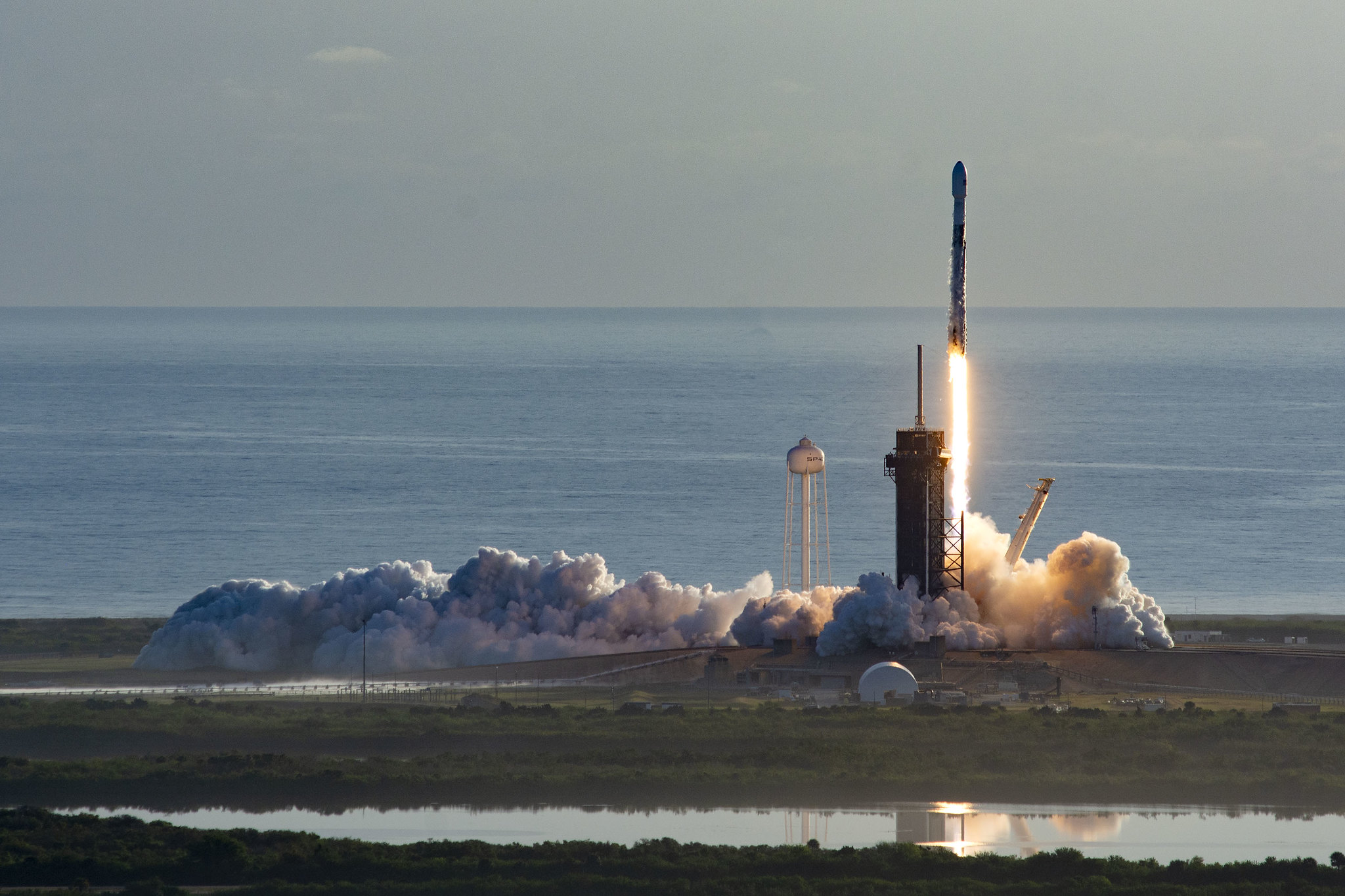
SpaceX's next batch of Starlink internet satellites will get off the ground a day earlier than we'd thought.
The next 60 Starlink craft will launch Wednesday afternoon (April 22) instead of Thursday (April 23), SpaceX representatives announced today (April 20).
"With a more favorable weather forecast for launch and landing, now targeting Wednesday, April 22 at 3:37 p.m. EDT [1937 GMT] for this week’s Falcon 9 Starlink mission," the company said via Twitter this afternoon.
As that tweet notes, SpaceX will attempt to land the first stage of the Falcon 9 rocket that lofts the Starlink satellites. That booster already has considerable experience going up and coming down; it has flown three space missions to date.
You can watch all the action live here and on the Space.com homepage when the time comes, courtesy of SpaceX, or directly via the company. SpaceX's webcasts typically begin about 15 minutes before launch.
With a more favorable weather forecast for launch and landing, now targeting Wednesday, April 22 at 3:37 p.m. EDT for this week’s Falcon 9 Starlink missionApril 20, 2020
Wednesday's launch will be the seventh 60-satellite Starlink liftoff for SpaceX to date. And many more such missions are coming in the near future, if all goes according to plan: SpaceX has approval to loft 12,000 Starlink satellites to low Earth orbit and has sought permission for up to 30,000 additional craft.
The Starlink constellation is designed to provide fast and cost-effective internet service to people around the world. The network is on track to be up and running before the end of 2020, SpaceX representatives have said.
Get the Space.com Newsletter
Breaking space news, the latest updates on rocket launches, skywatching events and more!
That doesn't mean 12,000 satellites will be aloft by then, however. Company founder and CEO Elon Musk has said that Starlink could provide "minor" broadband coverage with at least 400 satellites and "moderate" coverage with about 800.
- In Photos: SpaceX launches third batch of 60 Starlink satellites to orbit
- SpaceX's Starlink broadband service will begin in 2020: Report
- Why SpaceX's Starlink satellites caught astronomers off guard
Mike Wall is the author of "Out There" (Grand Central Publishing, 2018; illustrated by Karl Tate), a book about the search for alien life. Follow him on Twitter @michaeldwall. Follow us on Twitter @Spacedotcom or Facebook.
OFFER: Save 45% on 'All About Space' 'How it Works' and 'All About History'!
For a limited time, you can take out a digital subscription to any of our best-selling science magazines for just $2.38 per month, or 45% off the standard price for the first three months.
Join our Space Forums to keep talking space on the latest missions, night sky and more! And if you have a news tip, correction or comment, let us know at: community@space.com.

Michael Wall is a Senior Space Writer with Space.com and joined the team in 2010. He primarily covers exoplanets, spaceflight and military space, but has been known to dabble in the space art beat. His book about the search for alien life, "Out There," was published on Nov. 13, 2018. Before becoming a science writer, Michael worked as a herpetologist and wildlife biologist. He has a Ph.D. in evolutionary biology from the University of Sydney, Australia, a bachelor's degree from the University of Arizona, and a graduate certificate in science writing from the University of California, Santa Cruz. To find out what his latest project is, you can follow Michael on Twitter.

